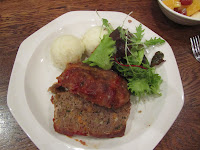
It has never ceased to amaze our friends from Hong Kong whenever we asked for a second helping of cut chillies or hot chilli sauce at the yum cha lunches together. “How can you enjoy the delicate taste of those dim sums when you have numbed your taste buds with chillies!” they exclaimed. Just as it is difficult for them to convince us to give up on the chilli with every mouthful of dim sum and enjoy the delightful morsel as it is presented, it is even more difficult for us to eat without chilli. Well, unless you are true blue Singaporean, the likelihood of you to understand this spiritual experience or otherwise is out of the window. There is simply nothing quite likes it – it’s a delightful sensual culinary world of chilli. This usually begins with a tingling wave when the chilli first comes into the contact with the tongue. It gradually gives way to a warm heat but soon passes into a numbing, almost anaesthetic feeling on the tongue. For those who are not accustomed to this eating habit, it can be a burning sensation but to many Singaporeans it is peculiarly addictive because it is purported to give them a spiritual lift to go with that sensual experience.
Buying chilli can be expensive, yet the plants are perfectly easy to grow even in the cool temperate regions of Sydney. You can grow plants from seed but it is easier to buy seedlings from the local nursery or Asian stores and it no time you’ll have all those wonderful chilli to harvest and eat. There are several different varieties of chillies, which lends their own characteristic flavour to their spiciness of their particular regions’ dish. The Thai and Korean cuisines usually demand mainly hot chillies, whereas we prefer the medium to hot chillies for the simple cut chilli to go with most Singaporean dishes such as kuih teow soup or beef noodle soup.




